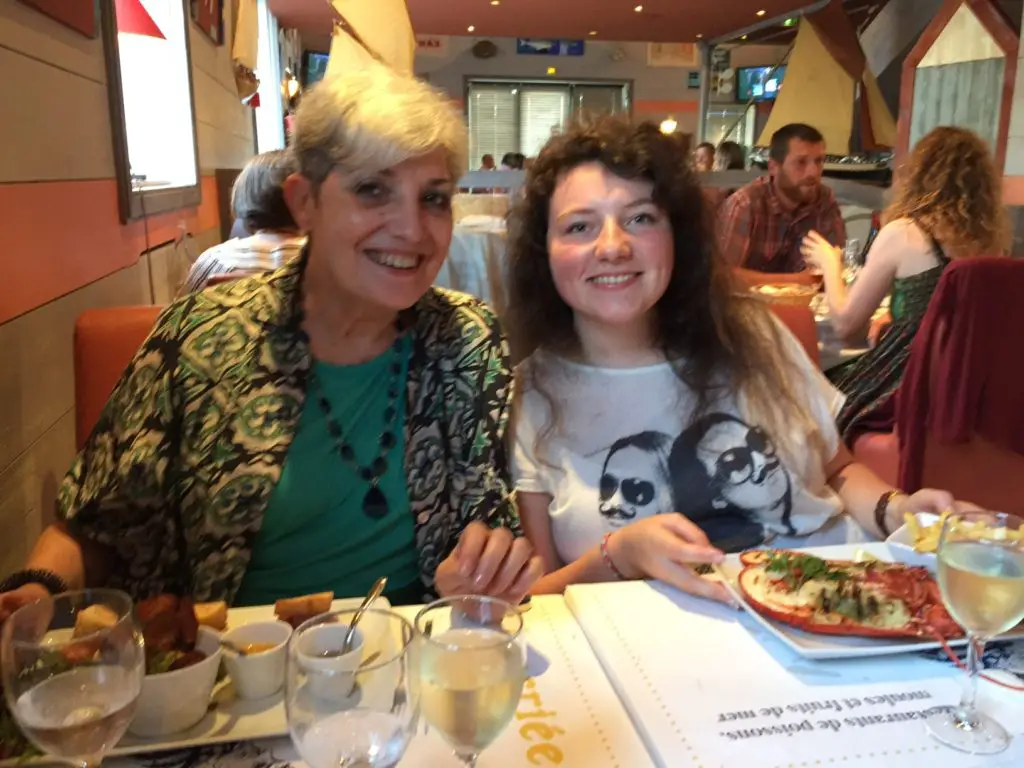If you’ve followed this blog, you’ll be aware that I mix personal interest with purely food and culinary content. One of my hobbies is writing and my sixteenth book called ‘Jasmine’s Journey’ has been released. The story is the third in ‘The French Collection’ series. Here’s a bit about it
Jasmine’s Journey
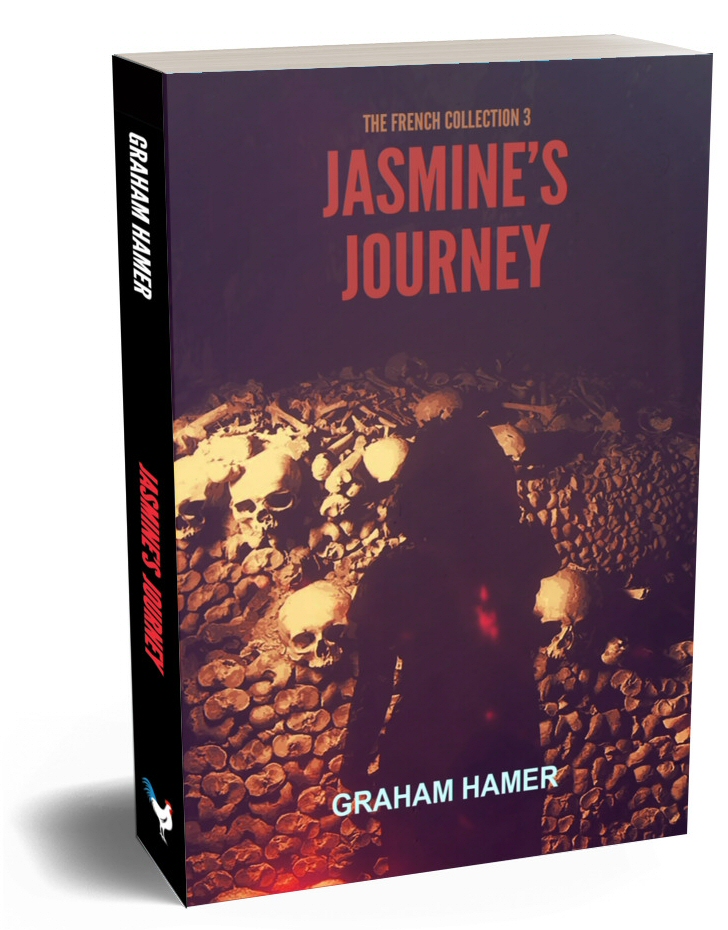 Jasmine Guichard didn’t want Father Barbier touching her. She’s a plucky eight-year-old and she makes a run for it, but finds herself deep under the streets of Paris and lost in a maze of dark tunnels. But for a chance glimpse of her whilst visiting the catacombs, Harry and Tristan would have been none the wiser. Yet what can they do about it? They are eventually helped in their efforts by a young nun who is not at all what she seems. There’s more going on behind the closed doors of the Daughters of Charity of Saint Isabelle of France than meets the eye – a lot more.
Jasmine Guichard didn’t want Father Barbier touching her. She’s a plucky eight-year-old and she makes a run for it, but finds herself deep under the streets of Paris and lost in a maze of dark tunnels. But for a chance glimpse of her whilst visiting the catacombs, Harry and Tristan would have been none the wiser. Yet what can they do about it? They are eventually helped in their efforts by a young nun who is not at all what she seems. There’s more going on behind the closed doors of the Daughters of Charity of Saint Isabelle of France than meets the eye – a lot more.
Meanwhile, The Vicar is in Paris to complete a contract to terminate a paedophile. His chance meeting with Harry and Tristan could be the trigger they need to dig deeper into Jasmine’s disappearance. D.S. Robbie Allen and D.C. Benedict Blewett have been dispatched from Liverpool to find The Vicar before he strikes again.
Who will win the race?
| Amazon Kindle (£UK) | Printed Paperback ($USA) |
| Printed Paperback (£UK) | Amazon Kindle ($USA) |
| Kobo (£UK) | Kobo ($USA) |
| Barnes & Noble ($USA) | |
JASMINE’S JOURNEY
Jasmine continued downwards, moving her torch from side to side and up and down. She had discovered that thirty seconds winding the handle gave her about 15 minutes of light. The younf girl shivered with the cold. She was wearing only a light summer tunic and the temperature down here seemed to be no more than about 10°C or 12°C. The passageway twisted and turned. The floor of the passage was limestone, the same as the walls, but loose stones and lumps of rock had fallen over time and walking wasn’t easy. In places the roof of the passage was over four metres high. Elsewhere it dropped down to not much more than one metre and Jasmine had to bend low to pass through. It was, she felt, like being in an Indiana Jones movie. Any minute now, she expected to see a great, unstoppable ball of stone rolling down the passage towards her.
And then the passage opened up and she found herself in a cavern that was so vast, her torch beam couldn’t reach the furthest walls. She walked on, touching the walls and examining the marks of tools in the stone. Here and there on the walls were men’s initials, like ancient street tags. It was clear that the space had been hacked out of the rock: there was nothing natural about it. The roof was, she estimated, about five metres high, and several huge columns of limestone had been left intact to support the weight of rock above. As she approached one of the walls, she could see that enormous lumps of limestone had fallen to the floor. There would be a moment in the future when the crushing weight above would collapse the whole gallery, filling it with millions of tons of bedrock. She hoped it wouldn’t happen in the next few minutes.
LOST IN THE CATACOMBS
Walking round the periphery, her torch illuminated several incoming passages, radiating out all directions. And then Jasmine spotted the bent and rusted remains of a narrow train track. This time, her mind filled with images from Indiana Jones and the Temple of Doom when Indy, Shorty, and Willie were involved in a mine cart chase to escape the temple. But it occurred to her that in reality this is how the miners would have transported the stone to the surface. Following the tracks would maybe lead her to an exit. If the men who created these caves tunnelled their way in, then there had to be a way out.
But what if there wasn’t? What would she do if the tunnel went nowhere? Jasmine felt the panic begin to rise again like a cluster of weasel teeth in her abdomen. She sensed the tension grow in her face and limbs. Jasmine closed her eyes, her mind replaying her panic attack when the lights first went out. She didn’t want it to happen again, but couldn’t stop what was happening to her in this wretched blackness. Her breathing became more rapid, more shallow. It was like her thoughts were living in a personal hurricane of fear. She gulped. Anything to stop the primal urge to just flee and try to get away from the darkness that surrounded her and suffocated her.
Frozen to the spot, large salty tears darkened her face. She wasn’t crying; they simply rolled out of her closed eyes unbidden. There she stayed, unaware of the passing of time until she realised that the feelings of panic had subsided. She opened her eyes. Though she could still hear each of her breaths, rasping just the same as when she had the flu, she’d made it. She was back in control. Almost.
Image used and published according to the licence granted by the artist
 The recipe for this tasty treat is at
The recipe for this tasty treat is at 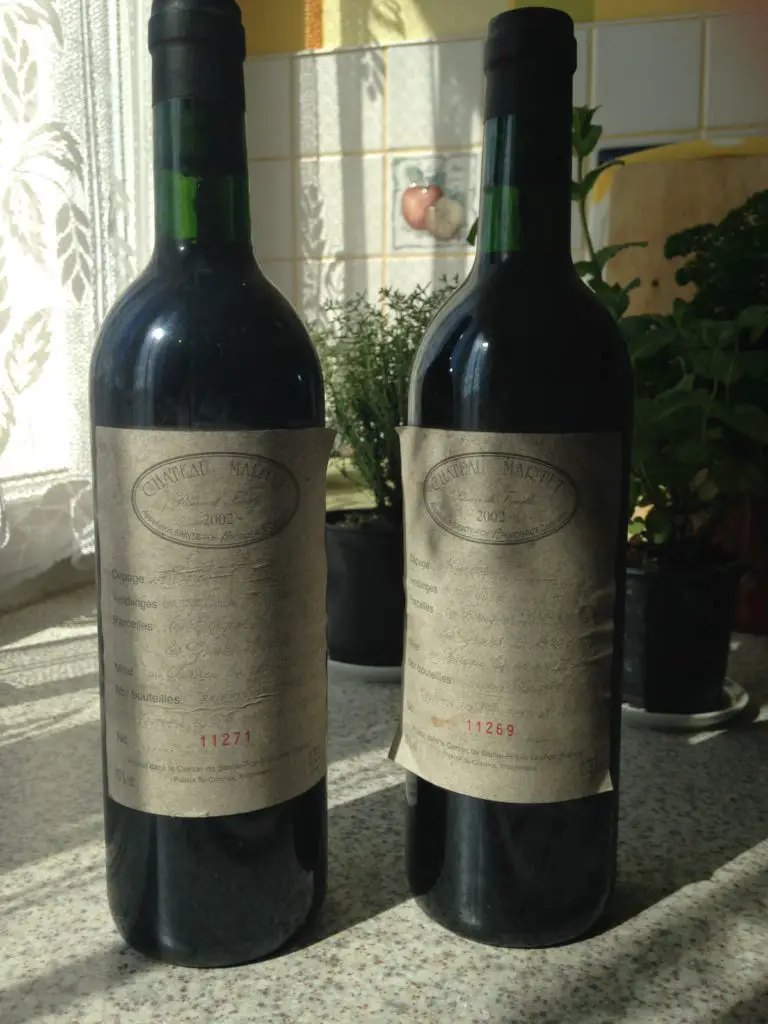 And what do you drink with a Pithiviers de Canard? Good question, and we raided the wine cellar to find some dusty but interesting-looking bottles of 2002 Chateau Martet – a cheeky little Merlot that complimented our ‘Luxury Duck Pie’ perfectly.
And what do you drink with a Pithiviers de Canard? Good question, and we raided the wine cellar to find some dusty but interesting-looking bottles of 2002 Chateau Martet – a cheeky little Merlot that complimented our ‘Luxury Duck Pie’ perfectly.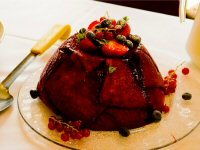 After a nibble of various cheeses, we ended up with something light and refreshing – one of our old favourites –
After a nibble of various cheeses, we ended up with something light and refreshing – one of our old favourites –  Normally, it is me who does the cooking, both on a daily basis and for special events. This time, because I was getting even older, Muriel had prepeared a
Normally, it is me who does the cooking, both on a daily basis and for special events. This time, because I was getting even older, Muriel had prepeared a 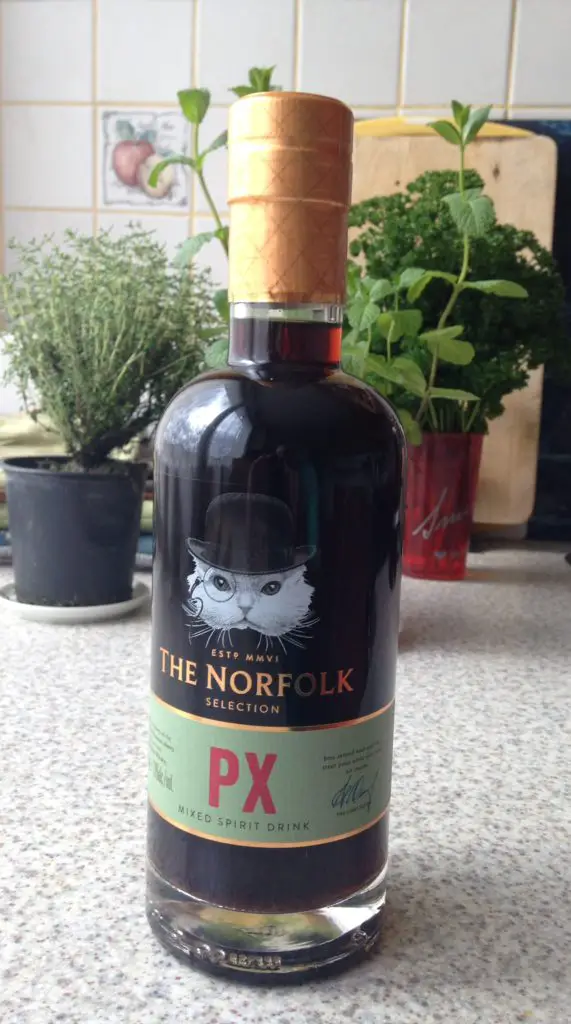 However, I must be getting some sort of reputation for boozing (or have I had that for a while?) because my birthday gifts included three bottles of excellent ‘liquid refreshment’. My son, Ian, brought an exquisite bottle of mixed spirits from English Whisky Co Ltd – the only English distillery of whisky. And what a great distillery it is. It’s situated at Harling Road, Roudham, about 7 or 8 miles north-east of Thetford in Norfolk. If you get a chance to visit – don’t hesitate (they’ve recently opened a café/restaurant which has already gained an enviable reputation for quality.) The ‘Mixed Spirits’ bottle is a combination of Perdo Ximenez sherry and their own single malt whisky. They use sherry casks to mature some of their whiskys, so I guess they ship the casks over full!
However, I must be getting some sort of reputation for boozing (or have I had that for a while?) because my birthday gifts included three bottles of excellent ‘liquid refreshment’. My son, Ian, brought an exquisite bottle of mixed spirits from English Whisky Co Ltd – the only English distillery of whisky. And what a great distillery it is. It’s situated at Harling Road, Roudham, about 7 or 8 miles north-east of Thetford in Norfolk. If you get a chance to visit – don’t hesitate (they’ve recently opened a café/restaurant which has already gained an enviable reputation for quality.) The ‘Mixed Spirits’ bottle is a combination of Perdo Ximenez sherry and their own single malt whisky. They use sherry casks to mature some of their whiskys, so I guess they ship the casks over full!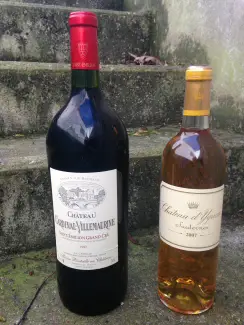 Continuing with the alcohol theme, My other son, Justin, sent over a Magnum (1.5 litres) of 1982 Chateau Cardinal Villemaurine, a rather splendid Saint-Emilion Grand Cru. I suspect I shall end up taking it over the the Isle of Man when we go in May. I know just the neighbours who would help me dispose of that!
Continuing with the alcohol theme, My other son, Justin, sent over a Magnum (1.5 litres) of 1982 Chateau Cardinal Villemaurine, a rather splendid Saint-Emilion Grand Cru. I suspect I shall end up taking it over the the Isle of Man when we go in May. I know just the neighbours who would help me dispose of that! We spent an informal Christmas Day this year in the company of two good friends, Florence and her son, Damien. We also decided to keep it simple, so we kicked off with smoked wild salmon from Olsen Bornholm, a specialist smoke house and curers, just a mile from where we live. But we dressed it up a bit and turned it into
We spent an informal Christmas Day this year in the company of two good friends, Florence and her son, Damien. We also decided to keep it simple, so we kicked off with smoked wild salmon from Olsen Bornholm, a specialist smoke house and curers, just a mile from where we live. But we dressed it up a bit and turned it into 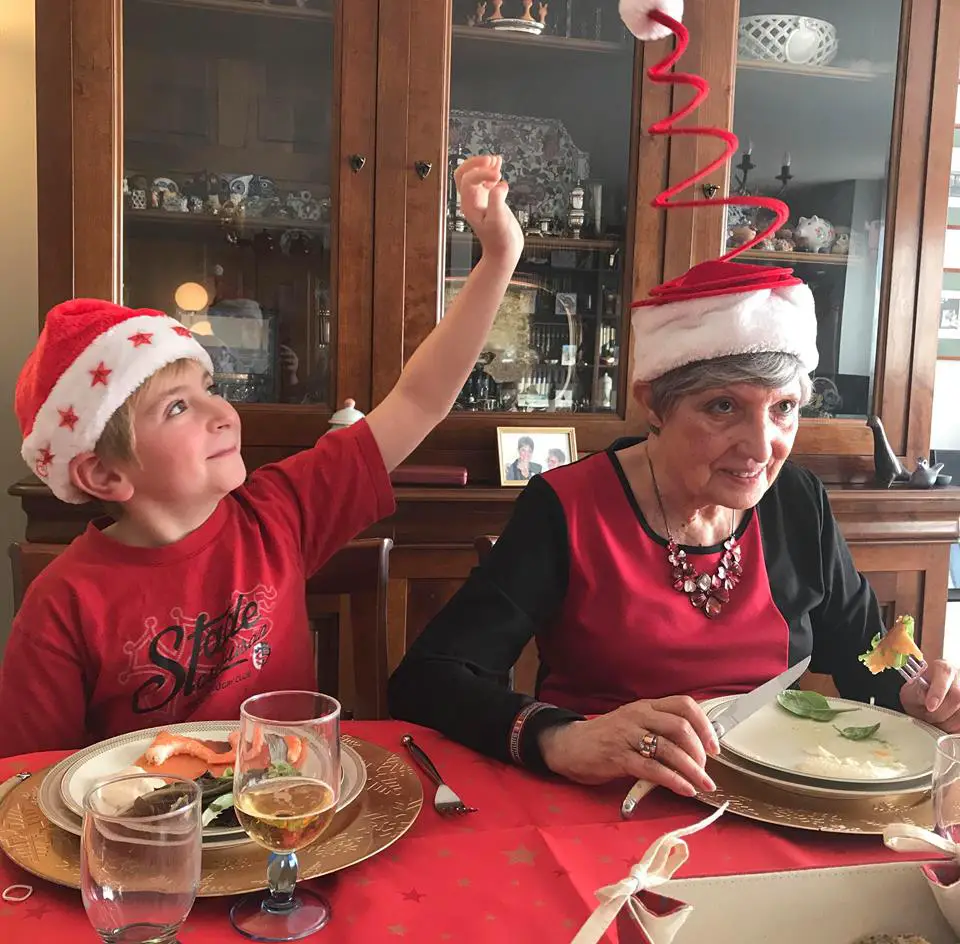
 Florence lives in the heart of Paris and she had brought with her some truly wonderful cheeses that we took our time over. She also brought the deserts – delicious hand-made cakes from one of the best patisseries in the capital. We would have been happy if she had just brought herself and Damien, but the cheese and desserts were an added bonus.
Florence lives in the heart of Paris and she had brought with her some truly wonderful cheeses that we took our time over. She also brought the deserts – delicious hand-made cakes from one of the best patisseries in the capital. We would have been happy if she had just brought herself and Damien, but the cheese and desserts were an added bonus.
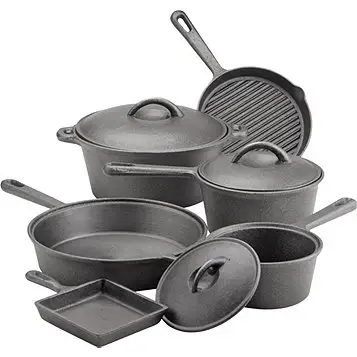 There’s a load of misinformation when it comes to cast iron pans. On the one hand there are people who claim you’ve got to treat your cast iron cookware like a new born babe. And on the other hand, there are the macho types who treat their pans like space junk! In fact, in the world of cast iron, there are several unfounded, untested claims and it’s time to put a few of those myths to rest.
There’s a load of misinformation when it comes to cast iron pans. On the one hand there are people who claim you’ve got to treat your cast iron cookware like a new born babe. And on the other hand, there are the macho types who treat their pans like space junk! In fact, in the world of cast iron, there are several unfounded, untested claims and it’s time to put a few of those myths to rest.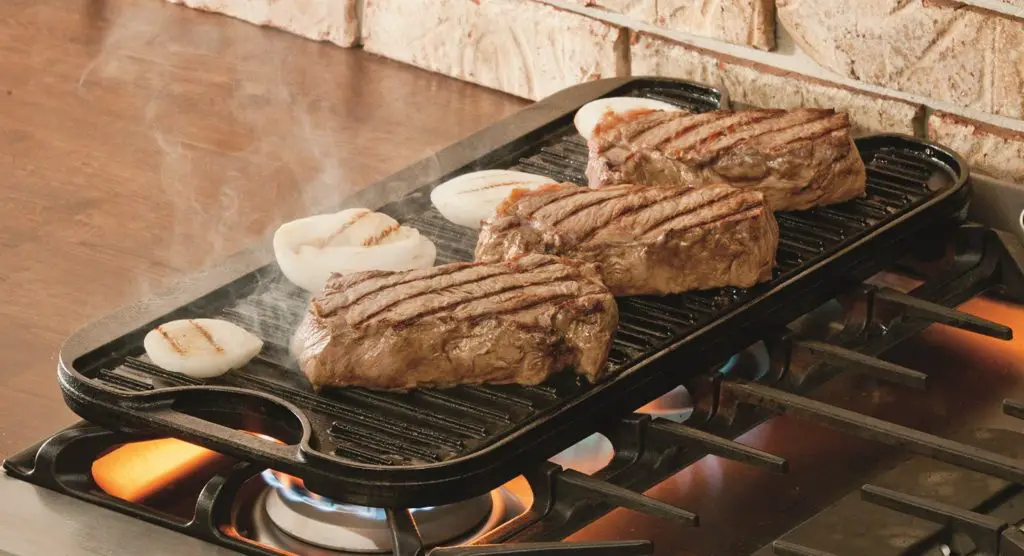 The Theory: Seasoning is a thin layer of oil that coats the inside of your skillet. Soap is designed to remove oil, therefore soap will damage your seasoning.
The Theory: Seasoning is a thin layer of oil that coats the inside of your skillet. Soap is designed to remove oil, therefore soap will damage your seasoning.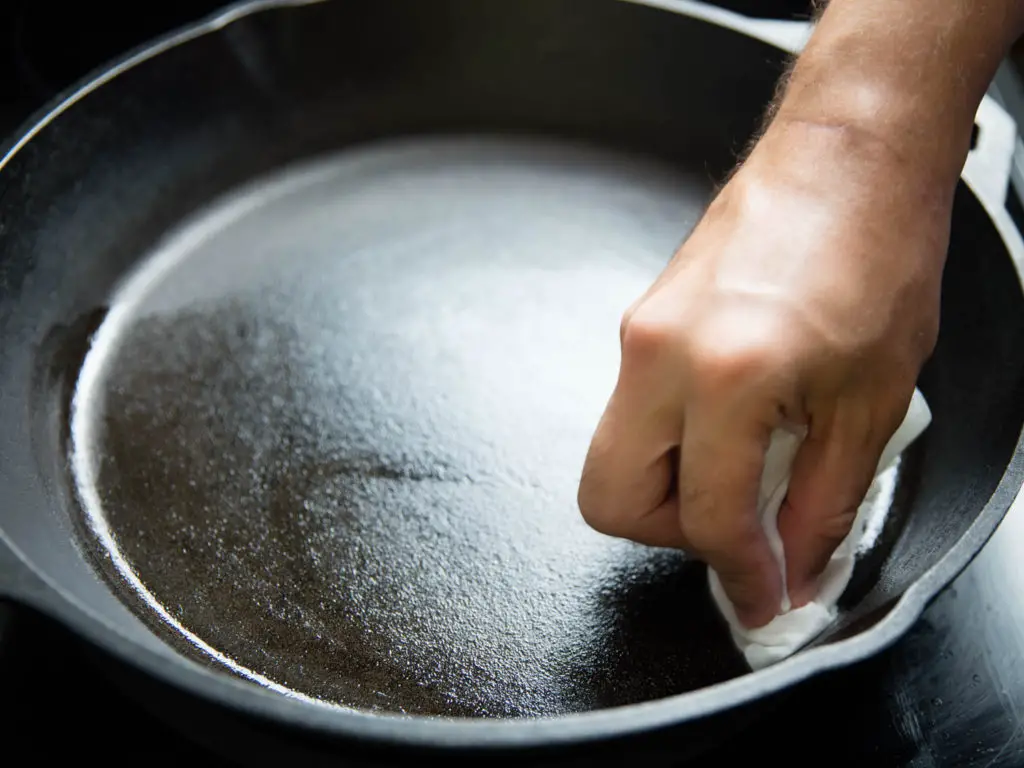 **** Re-season it. Rinse out any excess soap with water, then place the skillet over a burner set to high heat. When most of the water inside the skillet has dried out, add a half teaspoon of a neutral oil like vegetable, canola, flaxseed, or shortening. Rub it around with a paper towel. Continue heating the pan until it just starts to smoke then give it one more good rub. Let it cool and you’re done.
**** Re-season it. Rinse out any excess soap with water, then place the skillet over a burner set to high heat. When most of the water inside the skillet has dried out, add a half teaspoon of a neutral oil like vegetable, canola, flaxseed, or shortening. Rub it around with a paper towel. Continue heating the pan until it just starts to smoke then give it one more good rub. Let it cool and you’re done.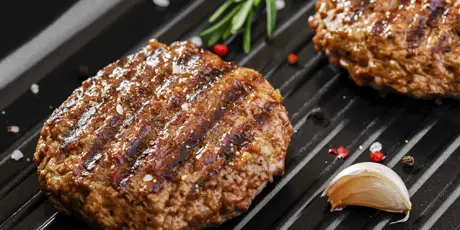 First, I need to explain the difference between English-English and American-English. In American-English, grilling is a form of cooking that involves dry heat applied to the surface of food, commonly from above or below. Grilling usually involves a significant amount of direct, radiant heat, and tends to be used for cooking meat and vegetables quickly. Food to be grilled is cooked on a grill, a grill pan, or griddle. Broiling is like grilling, only turned on its head. Broiling is when the heat is applied from above the food. In English-English, grilling is like American broiling. It’s also used for barbeques etcetera when the food rests on a metal grill. The other stuff is ‘pan fried’ or simply ‘fried’. So far; so complicated. So I shall try and explain as I go.
First, I need to explain the difference between English-English and American-English. In American-English, grilling is a form of cooking that involves dry heat applied to the surface of food, commonly from above or below. Grilling usually involves a significant amount of direct, radiant heat, and tends to be used for cooking meat and vegetables quickly. Food to be grilled is cooked on a grill, a grill pan, or griddle. Broiling is like grilling, only turned on its head. Broiling is when the heat is applied from above the food. In English-English, grilling is like American broiling. It’s also used for barbeques etcetera when the food rests on a metal grill. The other stuff is ‘pan fried’ or simply ‘fried’. So far; so complicated. So I shall try and explain as I go. For a burger with a difference, why not try
For a burger with a difference, why not try  It’s September and there’s an ‘r’ in the months, so the oysters are good. They’ve had all summer to grow and fatten, and now they are truly at their best – fresh and tasting of the sea. Traditionally, in France, oysters are eaten raw and in the shell, freshly delivered from the Atlantic ocean. The best way is to eat them with thin slices of rye bread, salted butter, and lemon juice. Some people add shallot vinegar, and that’s just fine too.
It’s September and there’s an ‘r’ in the months, so the oysters are good. They’ve had all summer to grow and fatten, and now they are truly at their best – fresh and tasting of the sea. Traditionally, in France, oysters are eaten raw and in the shell, freshly delivered from the Atlantic ocean. The best way is to eat them with thin slices of rye bread, salted butter, and lemon juice. Some people add shallot vinegar, and that’s just fine too.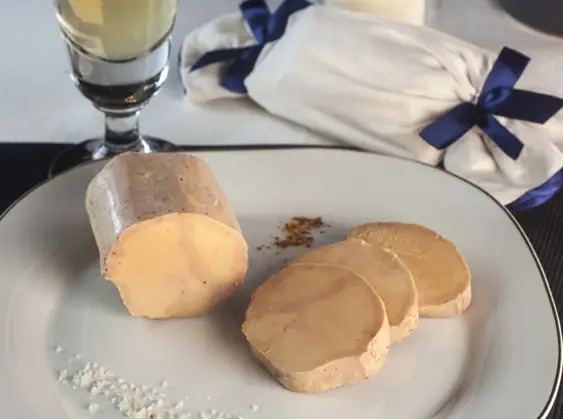 My recommendation is to avoid foie gras altogether if you can’t be sure it has been produced artisanally and ethically. If, however, you get to visit an independent producer on your travels, or have a solid recommendation for one from a chef or discerning cook, buy a terrine de foie gras entier mi-cuit (half-cooked) in a jar and savour every bite. We always buy from
My recommendation is to avoid foie gras altogether if you can’t be sure it has been produced artisanally and ethically. If, however, you get to visit an independent producer on your travels, or have a solid recommendation for one from a chef or discerning cook, buy a terrine de foie gras entier mi-cuit (half-cooked) in a jar and savour every bite. We always buy from 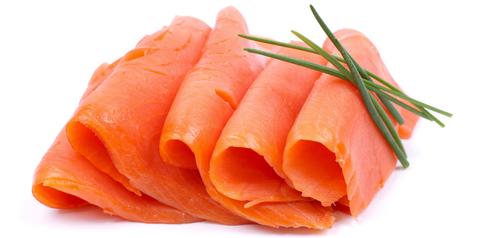 Another luxury food item that has been ruined by the consumer’s insistence to eat it any old day of the year, but no willingness to pay the proper price for it, is smoked salmon. The consequence is factory-farmed salmon that are pumped full of drugs and chemicals to make them grow more quickly. They are destroying the environment, and the result is oily smoked salmon with little firm texture, that just tastes of fish and smoke.
Another luxury food item that has been ruined by the consumer’s insistence to eat it any old day of the year, but no willingness to pay the proper price for it, is smoked salmon. The consequence is factory-farmed salmon that are pumped full of drugs and chemicals to make them grow more quickly. They are destroying the environment, and the result is oily smoked salmon with little firm texture, that just tastes of fish and smoke. So, after I did a spell of work in Kuwait, we got together and discovered that we were both stubborn as hell, butted heads frequently, but that there was an undoubted connection. (25 years later, we are still both stubborn as hell and butt heads frequently – nothing’s changed. But that connection is still there, strong as ever.)
So, after I did a spell of work in Kuwait, we got together and discovered that we were both stubborn as hell, butted heads frequently, but that there was an undoubted connection. (25 years later, we are still both stubborn as hell and butt heads frequently – nothing’s changed. But that connection is still there, strong as ever.) And what’s all this got to do with a foodie blog? you may ask. The answer is nothing, it’s just that today is the 10th anniversary of that wedding, and Marie-Danielle even has a certificate to prove it! Since M-D is French, we had to have the ‘permission’ of the French consulate (situated in Edinburgh) to get married. It didn’t arrive in time (very French) but we went ahead anyway. Can’t let some idle civil servant slow down international relations.
And what’s all this got to do with a foodie blog? you may ask. The answer is nothing, it’s just that today is the 10th anniversary of that wedding, and Marie-Danielle even has a certificate to prove it! Since M-D is French, we had to have the ‘permission’ of the French consulate (situated in Edinburgh) to get married. It didn’t arrive in time (very French) but we went ahead anyway. Can’t let some idle civil servant slow down international relations. Since we had both been married before, we decided on a quiet wedding. We had two witnesses (two very good long-time friends) the photographer, and the lady in charge of the ceremony at the registry office in Douglas, on the Isle of Man.
Since we had both been married before, we decided on a quiet wedding. We had two witnesses (two very good long-time friends) the photographer, and the lady in charge of the ceremony at the registry office in Douglas, on the Isle of Man.
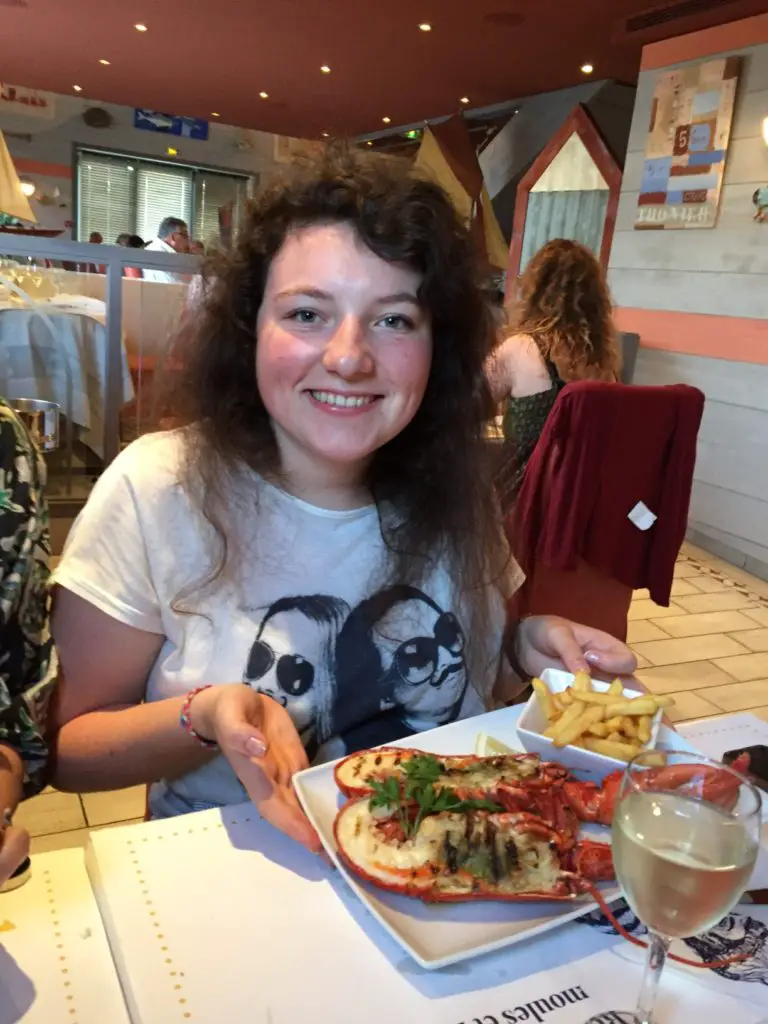 But that was twenty years ago. Now, a wonderful butterfly has emerged from that ball of humankind, and her name is Clémence. This weekend, we met up with Clémence at her home in Cléry-Saint-André in the Loiret department of north-central France, near Orleans. Her parents were away and her sister was in Corsica with her grandparents, so Clémence was on her own. We thought it would be a good idea to take her out for a meal somewhere, so that’s what we did. (We don’t usually drive 100 miles for a meal!)
But that was twenty years ago. Now, a wonderful butterfly has emerged from that ball of humankind, and her name is Clémence. This weekend, we met up with Clémence at her home in Cléry-Saint-André in the Loiret department of north-central France, near Orleans. Her parents were away and her sister was in Corsica with her grandparents, so Clémence was on her own. We thought it would be a good idea to take her out for a meal somewhere, so that’s what we did. (We don’t usually drive 100 miles for a meal!)